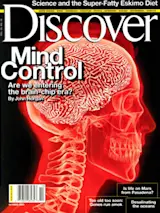Since the day Brandon Mayfield, a lawyer from Portland, Oregon, was released from federal custody after a fingerprint had linked him to this year’s Madrid terror bombings, a national debate has erupted over the scientific validity of fingerprint identification. Legal scholars and defense attorneys have been shocked to discover that almost no research has been done to confirm that everyone actually has different fingerprints. The problem is compounded by the fact that matching fingerprints to a specific person can be a matter of some interpretation. Coincidentally, just as fingerprints are being challenged within the judicial system, they are finding new life in the private sector. If a company called DigitalPersona has its way, fingerprints will someday become the preferred means of personal identification every time anyone uses a credit card or withdraws money from an ATM.
One of the strange side effects of modern life is the sheer number of ...














